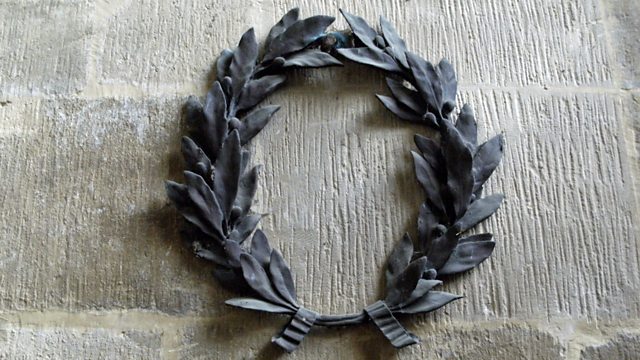Mells, Somerset: Memorial to the Prime Ministerβs Son Killed in Action
The church which echoes to the ultimate irony of war
Brilliant, dashing, charming and influential; Raymond Asquith was surely destined for a great career in the public eye. Described by his stepmother, Margot Asquith, as βintellectually one of the most distinguished young men of his dayβ it seemed as if the world was at his feet in the years leading up to 1914. Yet he came to optimise that Edwardian generation of βbright young thingsβ who had their potential cut short by war.
Born in 1878, Raymond shone at school in Winchester and went on to have a formidable university career at Balliol, winning scholarships, becoming president of the Oxford Union and taking first class honours in classics and law. In 1902 he was elected a Fellow of All Souls and was called to the bar two years later.
Not only was he a talented barrister, an aspiring politician and a powerful orator but he was also a prolific and eloquent writer of letters, hundreds of which survive to this day.
For the vast majority of the British public though, he was known only as the prime ministerβs son. Raymond was the eldest child of Herbert Henry Asquith, the man who declared war on Germany in August 1914. Two years later, in the last months of his premiership, he had to endure the anguish of his own son and heir being killed in the fighting he had sanctioned.
Late in 1914 Raymond joined the 16th Battalion; The London Regiment as a second Lieutenant and the following summer he transferred to 3rd Battalion; Grenadier Guards, becoming a Staff Officer. Despite this he was keen to see action on the Western Front, so he made a request to return to active duty. On 15th September 1916 he led an attack near Ginchy but βbefore his regiment had been in action 10 minutesβ he received a bullet wound to the chest. He was brought back to the British lines and taken to a dressing station but it was too late. Raymond Asquith was 37-years-old and left a wife, Katharine, and three young children.
Margot Asquith would later say that had he lived βhe would have made the world ring with his nameβ.
Like all Britainβs fallen, Asquithβs remains stayed overseas. Even if his father had privately wanted his son repatriated, he knew it was both insensitive and politically impossible. His grave is in the Guillemont Road cemetery on the Somme. Like all the others there he has an Imperial (now Commonwealth) War Graves Commission headstone. His alone is inscribed with a poignant Shakespearean quotation from the conclusion of Henry V: βSmall time but in that small most greatly lived this star of Englandβ. Such was his promise and so great was the impact of his death that βa corner of a foreign fieldβ would never be enough.
Mells is a pretty village in an area of Somerset generally overlooked by the summer tourists. Itβs here that Katharineβs family, the Horners, had lived for generations and where their sorrow would inspire a special place of remembrance. Asquithβs memorial is not typical of the age. Itβs made up of eleven lines of Latin text, carved into the inner wall of the church tower by the notable sculptor Eric Gill. Above it sits a beautifully intricate brass wreath designed by the leading architect Sir Edwin Lutyens. But like countless numbers of headstones, inscriptions, name plates and simple wooden crosses all over the country and throughout the world, it bears witness to the human cost of war.
Location: Church of St Andrews, Mells, Somerset BA11 3PW
Image shows a brass laurel wreath by the designer and architect Sir Edwin Lutyens, which adorns Asquithβs memorial
Duration:
This clip is from
Featured in...
![]()
ΒιΆΉΤΌΕΔ Somerset—World War One At ΒιΆΉΤΌΕΔ
Places in Somerset that tell a story of World War One
![]()
Memory—World War One At ΒιΆΉΤΌΕΔ
Memorials and the commemoration of wartime lives
More clips from World War One At ΒιΆΉΤΌΕΔ
-
![]()
The loss of HMY Iolaire
Duration: 18:52
-
![]()
Scotland, Slamannan and the Argylls
Duration: 07:55
-
![]()
Scotland Museum of Edinburgh mourning dress
Duration: 06:17
-
![]()
Scotland Montrose 'GI Brides'
Duration: 06:41







